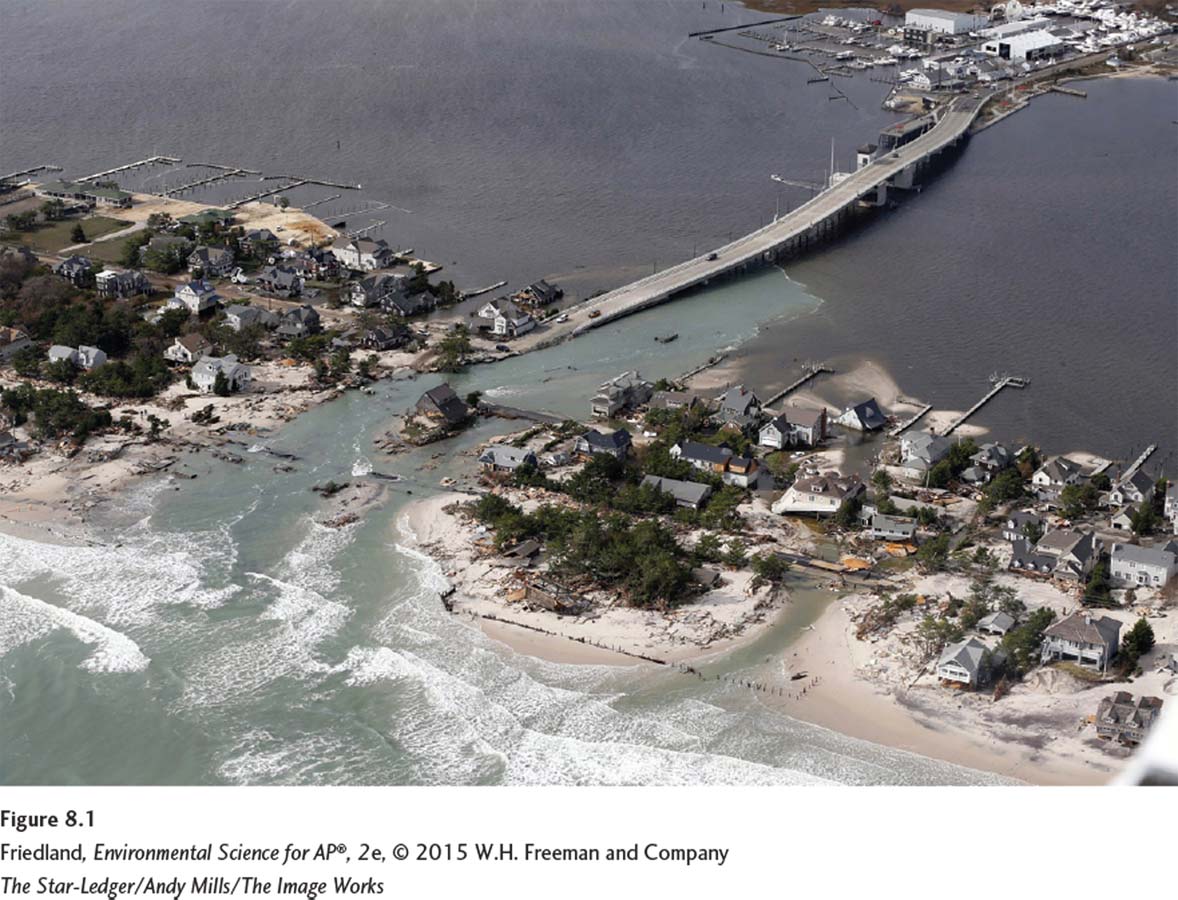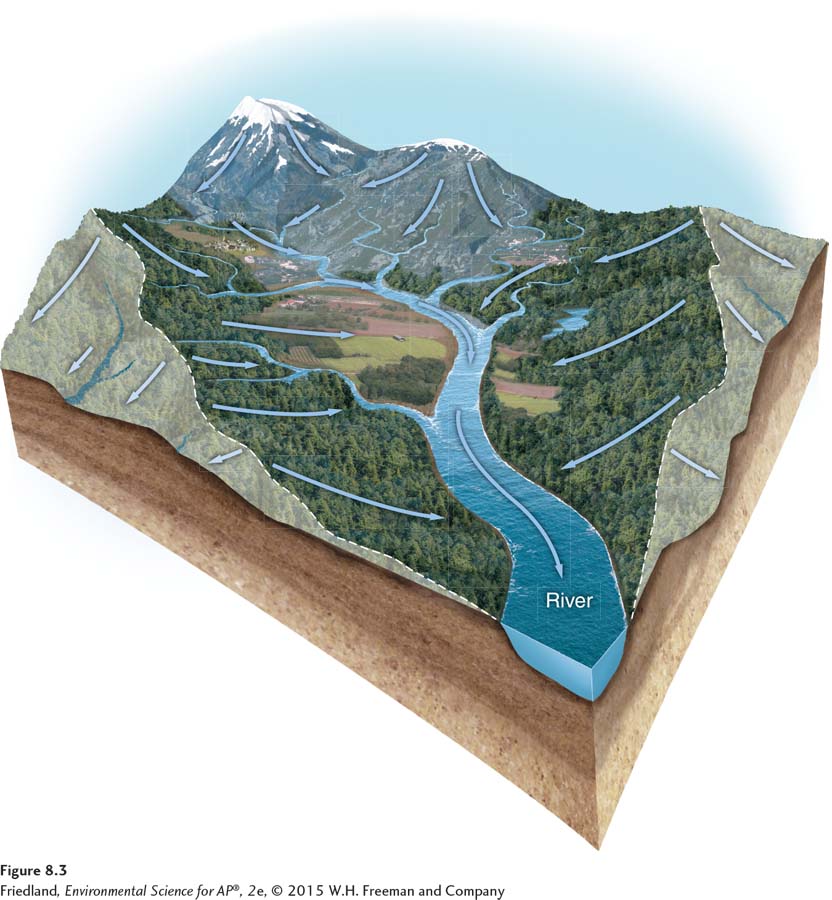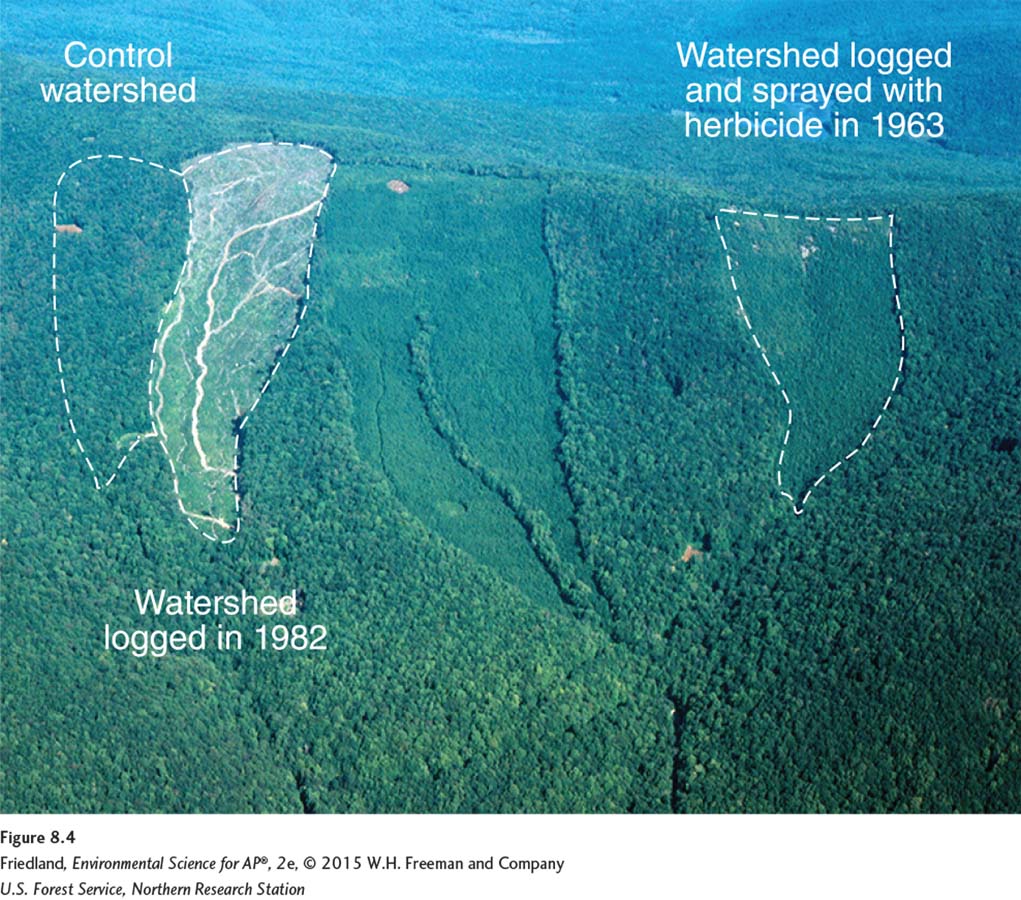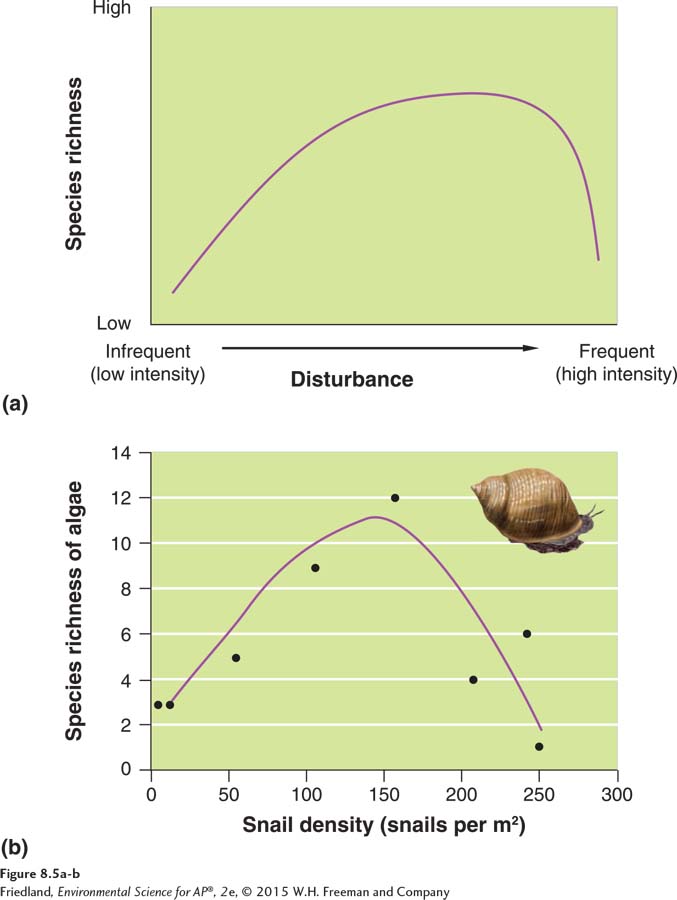module 8 Responses to Disturbances
As we have seen in the previous modules, flows of energy and matter in ecosystems are essential to the species that live in them. However, sometimes ecosystems experience major disturbances that alter how they operate. Disturbances can occur over both short and long time scales, and ecosystem ecologists are often interested in how disturbances affect the flow of energy and matter through an ecosystem. More specifically, they are interested in whether an ecosystem can resist the impact of a disturbance and whether a disturbed ecosystem can recover its original condition. In this module, we will look at how scientists study disturbances, how ecosystems are affected by disturbances, and how quickly these ecosystems can bounce back to their pre-
Learning Objectives
After reading this module you should be able to
distinguish between ecosystem resistance and ecosystem resilience.
explain the insights gained from watershed studies.
explain the intermediate disturbance hypothesis.
Ecosystems are affected differently by disturbance and in how well they bounce back after the disturbance
Disturbance An event, caused by physical, chemical, or biological agents, resulting in changes in population size or community composition.

In 2012, a major hurricane came to shore in New York and New Jersey and caused a tremendous amount of damage to local ecosystems, not to mention local homes and businesses (FIGURE 8.1). Hurricanes, ice storms, tsunamis,tornadoes, volcanic eruptions, and forest fires can all be classified as a disturbance because they are events caused by physical, chemical, or biological agents that results in changes in population size or community composition in ecosystems. Disturbances also can be due to anthropogenic causes, such as human settlements, agriculture, air pollution, forest clear-
Resistance A measure of how much a disturbance can affect flows of energy and matter in an ecosystem.
Not every ecosystem disturbance is a disaster. For example, a low-
Resilience The rate at which an ecosystem returns to its original state after a disturbance.
When the flows of energy and matter of an ecosystem are affected by a disturbance, environmental scientists often ask how quickly and how completely the ecosystem can recover its original condition. The rate at which an ecosystem returns to its original state after a disturbance is termed resilience. A highly resilient ecosystem returns to its original state relatively rapidly; a less resilient ecosystem does so more slowly. For example, imagine that a severe drought has eliminated half the species in an area. In a highly resilient ecosystem, the flows of energy and matter might return to normal in the following year. In a less resilient ecosystem, the flows of energy and matter might not return to their pre-
An ecosystem’s resilience often depends on specific interactions of the biogeochemical and hydrologic cycles. For example, as human activity has led to an increase in global atmospheric CO2 concentrations, terrestrial and aquatic ecosystems have increased the amount of carbon they absorb. In this way the carbon cycle as a whole has offset some of the changes that we might expect from increases in atmospheric CO2 concentrations, including global climate change. Conversely, when a drought occurs, the soil may dry out and harden so much that when it eventually does rain, the soil cannot absorb as much water as it did before the drought. The soil changes in response to the drought, which leads to further drying and intensifies the drought damage. In this case, the hydrologic cycle does not relieve the effects of the drought; instead, a positive feedback in the system makes the situation worse.
Restoration ecology The study and implementation of restoring damaged ecosystems.
Many anthropogenic disturbances—

Watershed studies help us understand how disturbances affect ecosystem processes
Watershed All land in a given landscape that drains into a particular stream, river, lake, or wetland.

Understanding the natural rates and patterns of biogeochemical cycling in an ecosystem provides a basis for determining how a disturbance has changed the system. Because it is difficult to study biogeochemical cycles on a global scale, most of this research takes place on a smaller scale where scientists can measure all of the ecosystem processes. Scientists commonly conduct such studies in a watershed. As shown in FIGURE 8.3, a watershed is all of the land in a given landscape that drains into a particular stream, river, lake, or wetland.
One of the most thorough studies of disturbance at the watershed scale has been ongoing for more than 50 years in the Hubbard Brook ecosystem of New Hampshire. Since 1962, investigators have monitored the hydrological and biogeochemical cycles of six watersheds at Hubbard Brook, ranging in area from 12 to 43 ha (30 to 106 acres). The soil in each watershed is underlain by impenetrable bedrock, so there is no deep percolation of water; all precipitation that falls on the watershed leaves it either by evapotranspiration or by runoff. Scientists measure precipitation throughout each watershed, and a stream gauge at the bottom of the main stream that drains a given watershed allows them to measure the amounts of water and nutrients leaving the system.

Researchers at Hubbard Brook investigated the effects of clear-
Studies such as the one done at Hubbard Brook allow investigators to learn a great deal about biogeochemical cycles. We now understand that as forests and grasslands grow, large amounts of nutrients accumulate in the vegetation and in the soil. The growth of forests allows the terrestrial landscape to accumulate nutrients that would otherwise cycle through the system and end up in the ocean. Forests, grasslands, and other terrestrial ecosystems increase the retention of nutrients on land. This is an important way in which ecosystems directly influence their own growing conditions.
Intermediate levels of disturbance favor high species diversity
Intermediate disturbance hypothesis The hypothesis that ecosystems experiencing intermediate levels of disturbance are more diverse than those with high or low disturbance levels.
We have seen that not all disturbance is bad. In fact, some level of ecosystem disturbance is natural, and may even be necessary to maintain species diversity. The intermediate disturbance hypothesis states that ecosystems experiencing intermediate levels of disturbance will favor a higher diversity of species than those with high or low disturbance levels. The graph in FIGURE 8.5a illustrates this relationship between ecosystem disturbance and species diversity. Ecosystems in which disturbances are rare experience intense competition among species. Because of this, populations of only a few highly competitive species eventually dominate the ecosystem. In places where disturbances are frequent, population growth rates must be high enough to counter the effects of frequent disturbance and prevent species extinction.

An example of the intermediate disturbance hypothesis can be found in marine algae that spend their lives attached to rocks along the rocky coast of New England. In areas containing low densities of common periwinkle snails (Littorina littorea), which cause a low disturbance through low amounts of herbivory, just a few algal species dominate the community, as shown in FIGURE 8.5b. In areas containing high densities of sails, the disturbance from their high amount of herbivory caused only the most herbivore-